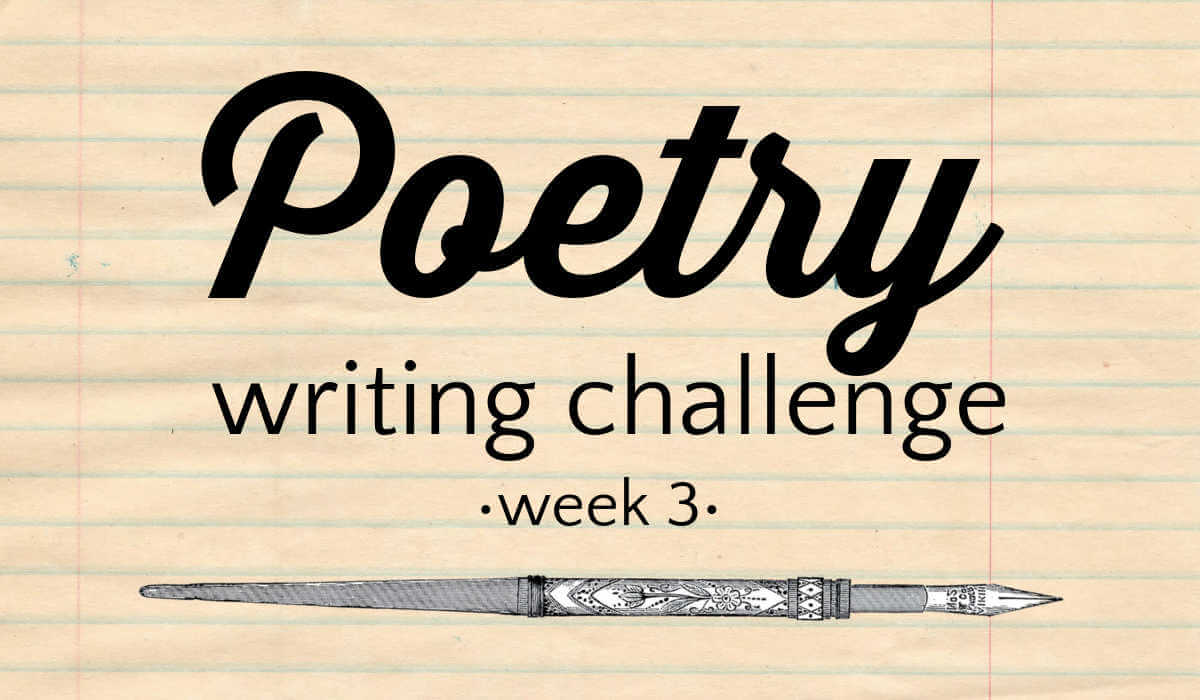Welcome to week three of the Poetry Writing Challenge for Kids! This week we are learning about onomatopoeia and couplets.

Last week's poetry writing challenge topic was alliteration and color poems. My 6-year-old adored making up alliterative sentences! I had to ask him to take a break while we were brushing his teeth because he was getting toothpaste all over his face!
MORE: Check out the poetry reading challenge, which is even easier to complete that this writing program!
As mentioned in the in the introductory post about our easy going poetry writing series, kids need not actually put pen to paper to "write" poems! In fact, we still have not done any actual pen and paper writing!
Most of our discussions and poetry composing has been done at the family dinner table or while we are getting ready for bed. Feel free to do the same!
MORE: Poetry bookmark coloring pages
Poetry Writing Challenge #1 - Onomatopoeia
Write a phrase or line using onomatopoeia.
What is Onomatopoeia? Onomatopoeia is when a word sounds like its meaning. Giggle, thump, fizzle, crack, murmur, gurgle, babble, chortle, fwoosh, meow, chirp.
Here is a classic example:
Hark, hark!
Bow-wow.
The watch-dogs bark!
Bow-wow.
Hark, hark! I hear
The strain of strutting chanticleer
Cry, 'cock-a-diddle-dow!'- Shakespeare, The Tempest, Act 1, sc. 2
... and a more contemporary one.
Your can't make me eat that,
it's slimy and gooey
and icky and yucky
and greasy and gluey.- Jack Prelutsky, from "You Can't Make Me Eat That" in It's Raining Pigs and Noodles
I simply adore onomatopoeia! It's so dramatic. However it is very hard to spell!
Extension Activities
Remember, these extension activities are totally optional. If your kids don't want to sit down and do them, don't press. As the smart grown-up you are, you'll be able to figure out ways to sneak them into conversation during the day.
- Make a list of as many onomatopoetic words you can. Divide them into categories, such as sounds (clank, moo) or perhaps elements (water: gush, burble; air: fwoosh, swish)
- Get physical. Challenge your kids to add a movement to the sound! This is a great indoor boredom buster that will burn lots of pent-up energy.
- Read a picture book and ask kids to assign an onomatopoetic word to actions in the illustrations. Wordless books are great for this! (See our list of favorite wordless books.)
- Draw pictures of what the words sound like. This could get very abstract!
BONUS: Working on the exercises in the poetry writing challenge will help your kids complete tasks for Poetry Bingo!
Poetry Writing Challenge #2 - Rhyming Couplets
Write a rhyming couplet.
What is a rhyming couplet? A couplet is two lines in which the final word in each line rhymes. Both lines have the same metre, or rhythm.
Here are two examples everyone will know!
I think that I shall never see
A poem lovely as a tree.- Joyce Kilmer
Humpty Dumpty sat on a wall
Humpty Dumpty had a great fall
I was a little worried that this might be too hard, but then I realized my silly 6-year-old likes to make up rhyming lines like this all the time. An intentional exercise like this one will tap into that creativity.
Extension Activities
- Pound out the rhythm of a couplet by clapping or knocking on a hard surface.
- Use onomatopoeia in your couplet.
- Use alliteration in your couplet. (From week 2)
- Use simile in your couplet. (From week 1)
- Illustrate your couplet.
- Many picture books are written in rhyming couplets. See if your kids can find one on your bookshelf or in the library.
- Ambitious kids and families can write triplets or quatrains!
Next up! The final week of the Poetry Writing Challenge. Can you guess what the topic will be?




Leave a Reply